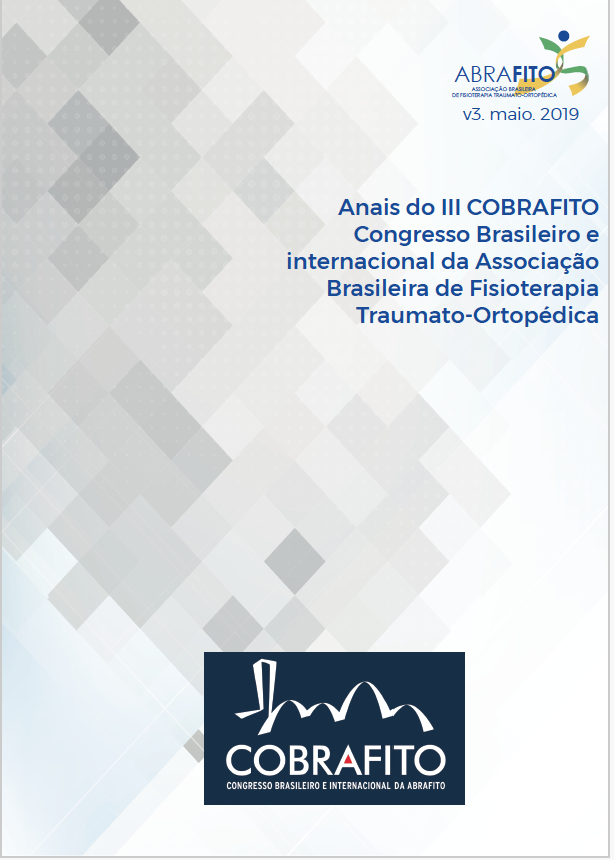DYNAMIC BALANCE AND HIP EXTENSOR TORQUE IN HANDBALL PLAYERS WITH AND WITHOUT SHOULDER PAIN
Resumo
Objective: The aim of this study was to compare the dynamic balance and peak torque of the hip extensors in handball players with and without shoulder pain. METHODS: Twenty-one healthy handball players and 21 with shoulder pain of the college level participated in this study. The anterior (ANT), posteromedial (PM), posterolateral (PL) SEBT reach distances and limb lengths were measured bilaterally. Isokinetic concentric peak torque of the hip extensors was measured at 60°/s for both sides. The average of trials was used for data analysis. The Student t-test for independent samples was used for group comparisons. An alpha level was set at .05. RESULTS AND DISCUSSION: Athletes with shoulder pain presented decreased reach distance for both limbs in the PM (P<.05) and in the PL directions (P<.05) during SEBT. No significant difference were found in the ANT direction for both limbs (P>.05) and for peak torque of the hip extensors between groups for both sides (P>.05). Regardless of the hip strength muscles, based upon the kinetic chain theory, abnormal neuromuscular control is enough to impair the biomechanics of the throw and lead to pain in the shoulder. The lack of significance in the ANT reach score is that individuals receive visual feedback from the reach limb, while for the others directions requiring a good anticipatory control during the test. CONCLUSIONS: Handball players with shoulder pain have less dynamic balance in the PM and PL reach directions than healthy players. Isokinetic hip extensor peak torque is not affected by shoulder pain.Downloads
Publicado
2019-05-25
Edição
Seção
Resumo
Licença
Autores do manuscrito deverão preencher e assinar a Declaração de Responsabilidades e Transferência de Direitos Autorais, que deverá ser anexada, pelo autor responsável pela submissão, no passo 4 do processo de submissão no sistema da revista (Clicar na opção “Browse”, selecionar o arquivo que deve ser inserido no formato pdf, clicar no botão “Transferir”, no campo “Título” digitar: Declaração de responsabilidades, depois clicar no botão “Salvar e Continuar” e prosseguir com o processo de submissão).Como Citar
DYNAMIC BALANCE AND HIP EXTENSOR TORQUE IN HANDBALL PLAYERS WITH AND WITHOUT SHOULDER PAIN. (2019). Anais Do Congresso Brasileiro Da Associação Brasileira De Fisioterapia Traumato-Ortopédica - ABRAFITO, 3(1). https://seer.uftm.edu.br/anaisuftm/index.php/abrafito/article/view/2205

